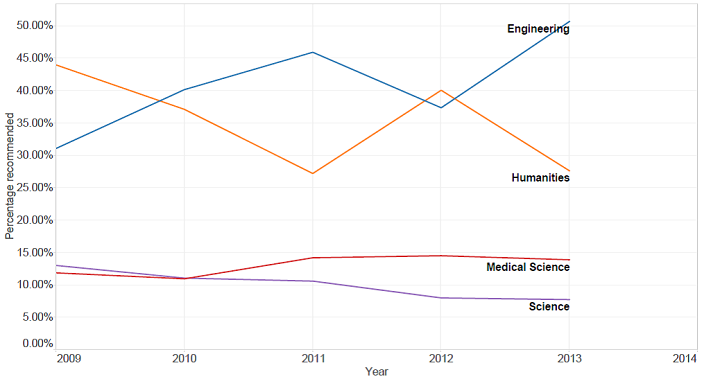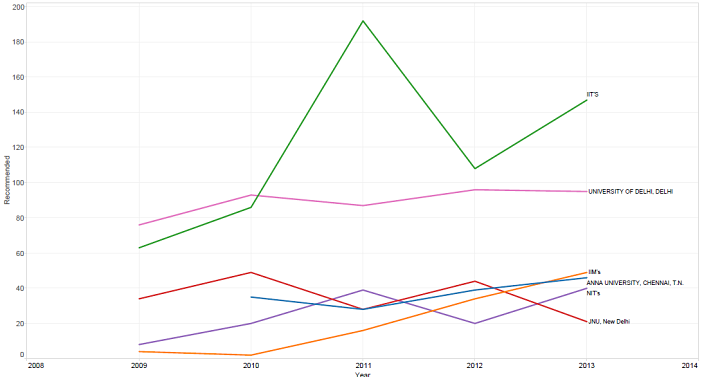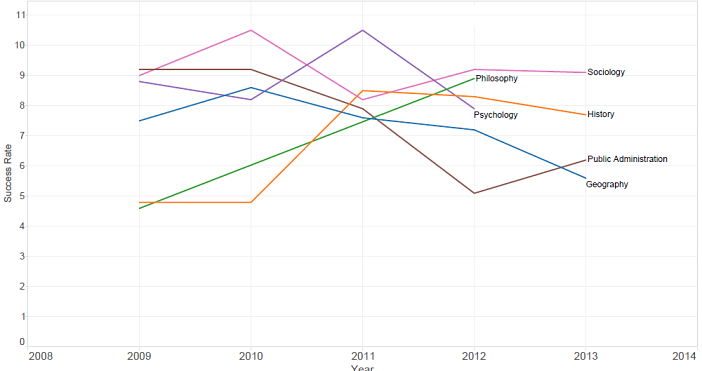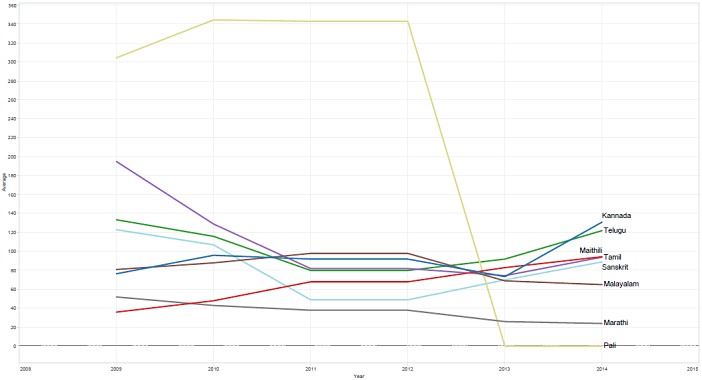[orc]Data of the civil services exam from 2009 to 2013 reveals that more than 50% of the successful candidates are either engineers or doctors. Most of the successful candidates come from the IITs while less than 3% of the successful candidates come from an Agricultural University.
The Civil Services Exam (CSE) conducted by the Union Public Service Commission (UPSC) is arguably the most competitive and coveted exam in the country. Each year, about 1000 posts are filled based on the results of CSE. These posts include the IAS, IPS, IFS, IRS and other Central Service posts. Data from 2009 to 2013 indicates that more than 50% of the selected candidates on average are either Engineers or Doctors.
More than 60% of the successful candidates in 2013 were either Engineers or Doctors
In 2009, the proportion of successful candidates with an engineering or medical degree was 43%. In 2010, this proportion went up to 51% with engineers alone accounting for more than 40%. The proportion of engineers and doctors crossed the 60% mark for the first time in 2011, to go down to about 51% in 2012. However, the highest ever proportion of engineers and doctors (64.6%) was in 2013. In 2013, the proportion of engineers alone was more than 50%, where as in the early 2000s, the proportion of engineers and doctors was only around 30-35%. The increase in the proportion of engineers and doctors was accompanied by the decrease in those with a degree in humanities. From 44% in 2009, the proportion of the successful candidates with a humanities degree went down to 27.6% in 2013. Proportion of successful candidates with a sciences degree is on a continuous decline. From about 13% in 2009, it is down to around 7.5% in 2013.
Hardly 3% of the selected candidates come from Agricultural Universities
Amongst various universities (regular & deemed), greatest number of successful candidates belong to either University of Delhi or the IITs in each of the five years from 2009 to 2013. While the highest number of successful candidates came from University of Delhi in 2009 and 2010, IITs have topped the list since 2011. In 2011, close to 190 of the selected candidates were from the IITs. The number of successful candidates with a degree from NITs and IIMs is also on the rise. From less than 10 successful candidates in 2009, the number of successful candidates from IIMs has gone up to around 50 in 2013. Substantial numbers of successful candidates also come from NITs, Anna University and JNU in Delhi. In each of the five years from 2009 to 2013, hardly 3% of the successful candidates had a degree from an Agricultural university.
Those who opted for Sociology had the highest Success Rate
Of all the optional subjects, candidates who opted for sociology had the highest success rate in 3 of the 5 years. In 2009, candidates who opted for Public Administration had the highest success rate while in 2011, it was candidates who opted for Psychology. The success rate of candidates choosing Public Administration and Geography is on the decline while the success rate of those who choose History & Philosophy is on the rise. Success rate is defined as the percentage of candidates finally selected out of those who chose that specific subject in CSE Mains. Only those subjects that had more than 30 successful candidates were taken into consideration for this analysis.
Number of Candidates opting for a language literature is coming down
The Civil Services (Mains) examination underwent a major change in 2013 when the number of optional subjects to be chosen by the candidates was brought down from two to one. This coincided with a significant drop in the number of candidates opting for any Indian language literature as the optional subject. The number of different languages on offer had also come down from 31 in 2012 to 23 in 2013. Pali Literature, which had been a favourite amongst candidates, with more than 300 candidates taking it every year till 2012 was dropped from the list in 2013. The number of candidates opting for literature in Kannada and Maithili is on the rise while it is on the decline for other languages like Tamil, Marathi etc.
Featured Image: Civil Services






